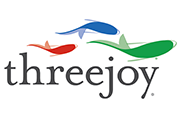- Speed 1: The NO Track
- Speed 2: The SLOW Track
- Speed 3: The GO Track
The NO track is, arguably, the most important track of educational transformation, but it is also the most difficult, and the one where most misspent effort is directed. Tenure and other institutional artifacts make contrary faculty members better boo-birds than team members, yet many change efforts spend a lot of time trying to change the minds of those dead set against the effort. Change leaders will array “evidence-based” methods, persuasion, shame, and then coercion against those on the NO track, to little or no avail. All this is natural enough given shared governance and the widely shared notion that all faculty must “buy in” to all innovations. In this way, academic decision procedures are a NIMBY problem (“transformation is great; just don’t change my course.”), and logrolling (“you vote against innovation in your course, and I’ll vote against it in yours”) results in nothing much changing. Making this work: The best approach to NO-track faculty is to simply go around them (with their blessing and ultimate approval), and have them witness genuine student engagement as frequently as possible. We think of NO-track faculty as hard headed and hearted, but my experience is that when they witness genuine student engagement, they soften and change their hearts, then their minds.
The people on the SLOW track are those who want to make transformative change and “buy in” to the conventional wisdom of change (e.g., active learning, PBL, experiential learning, flipped classrooms, etc.). These people are “expert” in change, , and the are likely to resist calls for more extreme measures–to emotion and culture change or to trust and courage leading to deep unleashing experiences (see Chapter 5 of A Whole New Engineer), for example–as much as the NO track resists the idea of any change. This resistance to the ultimate aims of transformation must be skillfully managed. Making this work: Those with an appetite for conventional change are important because they are ready to act, and once they establish micro-cultures of change, these pockets of reform become a locus for both future go-track membership and capture of the old culture with new sets of artifacts, beliefs, and assumptions.
The GO track is for those working who are ready and able to move as quickly as possible to the boundaries of what is possible in educational transformation, but ironically transformation is made more difficult because the process itself misleads practitioners into believing it is easy. The 4 steps to the slow or no track for go-trackers is a s follows:
- Confidence. A content-matter expert is successful in a narrow academic discipline.
- Underestimation. The expert judges educational change to be easier than mastering his/her discipline.
- Shallow reflection & study. The expert grabs at-hand examples–usually conventional and incremental examples–and starts to execution without deep reflection or study of best practices by others.
- Poor execution. To make matters worse, the expert executes individually, poorly, using methods aligned with ordinary class routine.
The result is a fairly shallow, poorly diffused, and unsustainable change effort. Thus, a key difficulty in transformative change is unleashing go-trackers and preventing overconfident NO- or SLOW-trackers from hijacking the ultimate aims of the transformation effort. Making this work: Several things help get the GO track moving at top speed. First, carefully assess the individuals and organizational units involved in transformative change to understand both their aspirations and readiness for transformation Ontological assessment helps do this by listening to units and individuals in units along key dimensions of change (What is education? What is change?). Then, put align individuals with there ability to move ahead, NO, SLOW, or GO. Finally, train GO and advanced SLOW trackers in the methods of personal and organizational change (using a ThreeJoy training (here) courses along the lines of Facilitating Change that Sticks here) and then unleash them to work with willing students in a number of little bets with the goal of obtaining a sequence of small wins.
Thinking and acting in this way will accelerate the conversion of NO to SLOW to GO tracks and boost both the speed of transformation and the chances of its continuing and sustainable success.
David E. Goldberg is president of ThreeJoy, the founder of the non-profit Big Beacon, and also a noted computer scientist, entrepreneur, civil engineer and professor emeritus at the University of Illinois, Urbana-Champaign. He resigned his tenured professorship in 2010 to work full time for the transformation of engineering education. He can be reached at deg@threejoy.com.
Goldberg published A Whole New Engineer: The Coming Revolution in Engineering Education earlier this year (with co-author Mark Somerville and writer Catherine Whitney). The book is available from ThreeJoy Associates and in hardcover and all major e-book formats.
